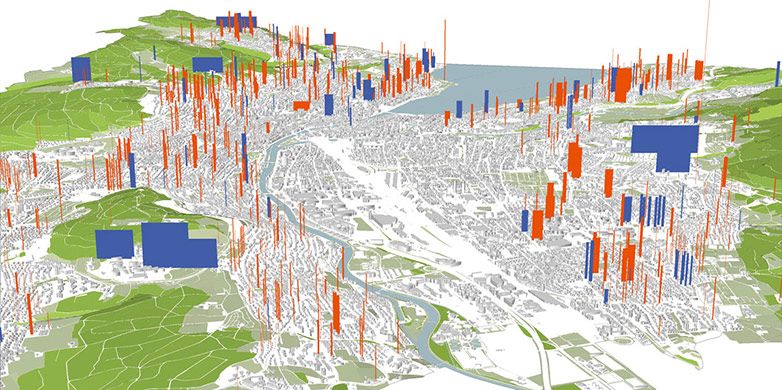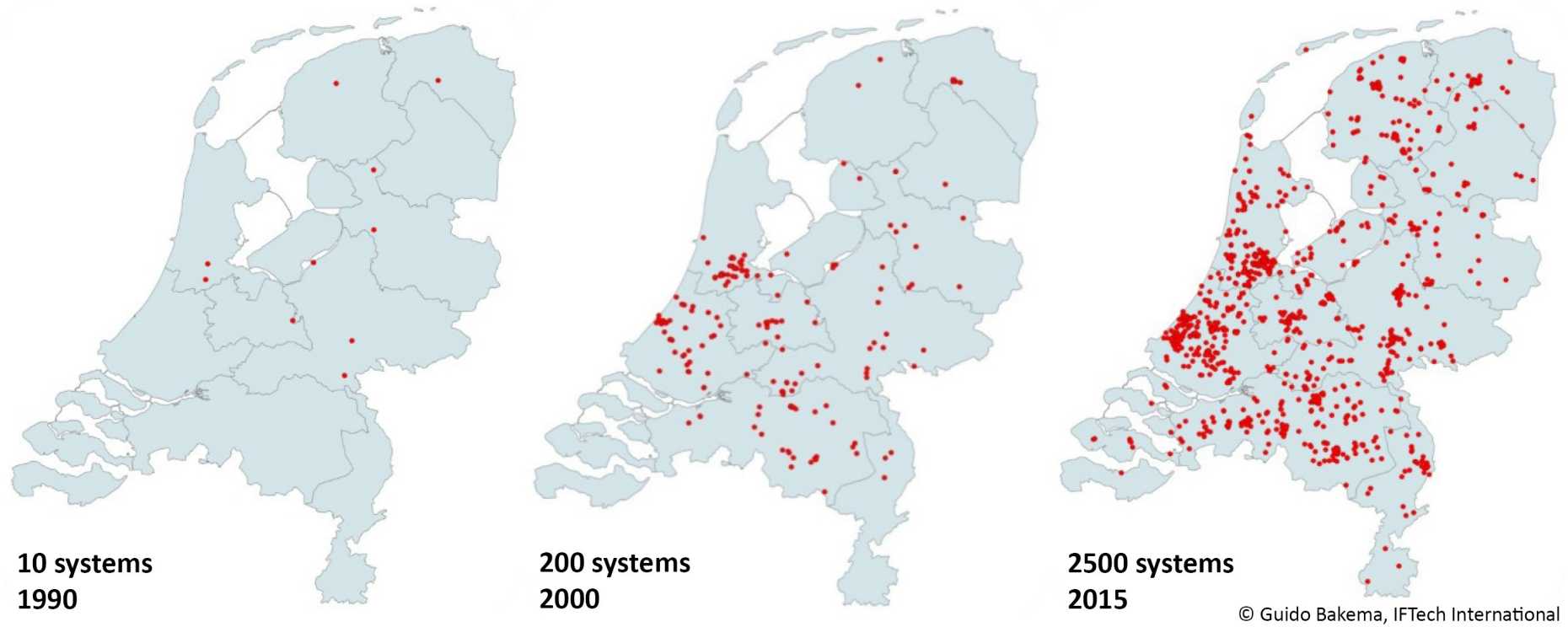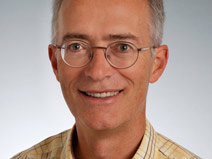Geothermal storage for our cities
Geothermal probes and heat pumps provide an effective alternative to oil heating, but they aren’t suitable for use in densely populated areas where probes in close proximity extract too much heat from the ground. However, using probes for heat storage as well could unlock their considerable potential.
I was in Grindelwald over the weekend and enjoyed the warm sunshine, which reached a heat flow of 250 Watts per square meter. In summer, values can reach upwards of 1,350 W/m2. I couldn’t feel any heat coming from the earth, which, by contrast, only produces around 0.09 W/m2. The thermal conduction of soil is very poor, causing heat to merely creep, not flow, to the surface. But thanks to geothermal probes [1] and heat pumps [2], it’s possible for heat to be channelled directly from the subsurface to houses.
Probes too close together
However, this system doesn’t work in densely populated areas, as neighbouring geothermal probes interfere with each other and will cool down the soil over time. As a consequence, probes that are placed too close together must be actively regenerated. For example, these systems are then used to cool houses in summer by directing excess heat back into the probes.
While brilliantly simple, it’s not a very effective solution. In the most efficient case, heat can be recharged by excess solar energy collected from the roofs of the houses [3]. A single-family house requires only a few square meters, but densely populated cities would require impossibly large solar panel surface areas – so we would have to search for a better solution. If river or lake water is available, for example, a low-temperature district heating grid could be used, heating houses with water-to-water heat pumps.
Seasonal geothermal storage for large areas and districts
Geothermal probes can not only extract energy, they can also store it for future use by putting heat into the ground to be withdrawn at a later time. The denser the placement of geothermal probes, the more efficient the storage becomes, up to 70% efficiency.

There are already many such systems in Switzerland. 200 meters below the surface of the ETH Zurich Hönggerberg campus, 425 geothermal probes store waste heat from server rooms and laboratories (read more here). The concept of seasonal storage with geothermal probe fields works well when they are built underneath new building developments.
Taking a look abroad
On the other hand, the city of Paris has shown us for many years how an existing urban area can reduce its dependency on oil and gas. Warm water from a water-bearing layer is pumped to the surface and fed through a heat exchanger, thereby supplying heat for a distributed heating system. Afterwards, the cooled water is reinjected into the subsurface, where it is reheated by the earth [4].
Shallow rock layers may also be used for seasonal geothermal storage with moderate temperatures (from 50 to 70 degrees Celsius), provided they have sufficient permeability and aren’t too thick. In addition, the ground water must not be used for drinking water and should have low flow rates. Heat can be supplied by waste heat from industry and refuse incinerators. 2,500 such geothermal storage devices have already been installed in the Netherlands from 20 to 300 meters underground. Heat pumps are used to heat houses.
Geneva goes geothermal
The Canton of Geneva is confident that its Molasse Basin is well suited for geothermal heat storage and hot water extraction. The Geothermie2020 [5] project was initiated for the planning and implementation of this concept. With this in mind, the Swiss Competence Center for Energy Research – Supply of Electricity (external page SCCER-SoE) and the University of Geneva are working together to find suitable locations through geologic analyses and simulations.
Better understanding of the Swiss subsurface
New wells will be drilled in Switzerland in the coming years, which will show whether deep reservoirs are permeable enough for the economical extraction of hot water, as is done in the Munich area (read more external page here). A better understanding of the mid-deep subsurface in Switzerland will help to identify optimal geologic layers for seasonal heat storage. Additionally, the SCCER-SoE and industry partners have planned tests for high temperature heat storage in petrothermal reservoirs, which do not depend on the presence of water-bearing layers.
This article is also available in the external page blog of the SCCER-SoE.
Further information
[1] Geothermie Schweiz: external page Technology (in German); for english information see Environmental Protection Agency: external page Geothermal Heating and Cooling Technologies
[2] Energie Schweiz: external page Heat pumps (in German); for english information see Environmental Protection Agency: external page Geothermal Heating and Cooling Technologies
[3] Geothermal probes: external page Optimization (in German)
[4] external page Geothermal energy in Paris (in French)
[5] external page GEothermie2020
[6] Stadtwerke München: external page Green heating: a vision becomes reality



Comments
No comments yet